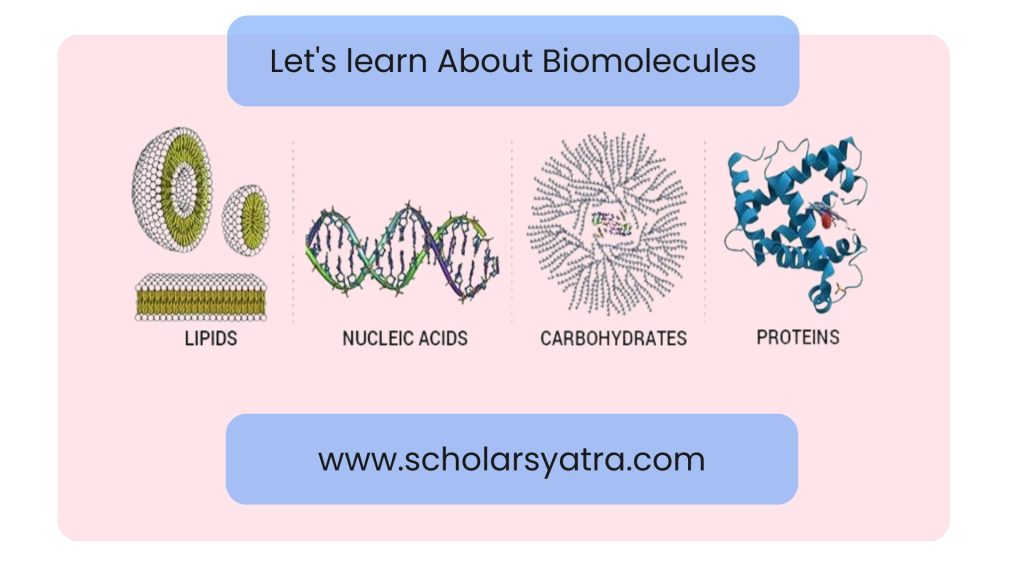Biomolecules- Carbohydrates, Proteins, Lipids, & Amino acids

Biomolecules are the essential compounds that sustain life, playing a vital role in the structure, function, and regulation of cells and organisms. These organic molecules, which include carbohydrates, proteins, lipids, and nucleic acids, are fundamental to all biological processes. From providing energy to building cellular structures and storing genetic information, biomolecules are inseparable blocks to […]
Arrays in C Programming

In C programming, an array is a data structure that allows you to store multiple values of the same type in a single variable. Arrays are useful when working with elements such as numbers, characters, or other data types. Rather than creating individual variables for each element, you can store them in a single array. […]
Aromatic Hydrocarbons

Introduction to Aromatic Hydrocarbons Aromatic hydrocarbons are a class of organic compounds characterized by the presence of one or more benzene rings. The aromatic hydrocarbons are “unsaturated hydrocarbons which have one or more planar six-carbon rings called benzene rings, to which hydrogen atoms are attached”. These compounds play a crucial role in both synthetic and […]
Control Statements

The statements which alter the flow of execution of a program are known as control statements. Discover the essentials of control statements in C programming. Learn how decision-making, looping, and branching structures help control the flow of a C program. There are two types of control statements: Decision Making & Repeating construct Decision-Making Statements […]
Mercury Compounds: Properties, Uses, and Toxicity

Let’s Learn about mercury compounds, their properties, industrial uses, toxicity, preparation, and environmental impact in this detailed guide. Mercury (Hg) is a unique metal that exists in both liquid and solid states under specific conditions. Its compounds are widely studied due to their significant roles in industries, environmental impact, and health concerns. Mercury is found […]
Operators and Expressions

Learn everything about operators and expressions in programming. Explore types of operators—arithmetic, logical, comparison, and more—along with detailed examples and usage to boost your coding skills. Operators An operator is a symbol that helps the user to command the computer to do certain mathematical or logical manipulations. Operators are used in C language programs to […]
Input and Output in C- Formatted Functions

In C programming, formatted input and output functions are essential for handling data in a structured and readable manner. These functions allow you to specify how data should be input or displayed by using format specifiers, providing flexibility when dealing with different data types. The two main formatted I/O functions in C are printf() for […]
Elements of C

Elements of C Programming The elements of C programming consist of basic building blocks that form the structure of C programs. Understanding these elements is crucial for writing efficient and functional C code. This overview also supports problem-solving with computers. The key elements include: Character Set The set of characters used for words, numbers, and […]
Compounds of zinc

Zinc compounds are a diverse group of chemical substances containing the element zinc, which has an atomic number of 30. Zinc is a transition metal, and it typically exists in the +2 oxidation state in its compounds. These compounds are widely used in various industries due to their chemical properties, including their roles in corrosion […]
Problem Solving with Computer

Problem Solving is a scientific technique to discover and implement the answer to a problem. The computer is a symbol-manipulating device that follows a set of commands known as a program. Program A program is a set of instructions that is run by the computer to perform a specific task. The task of developing a […]
